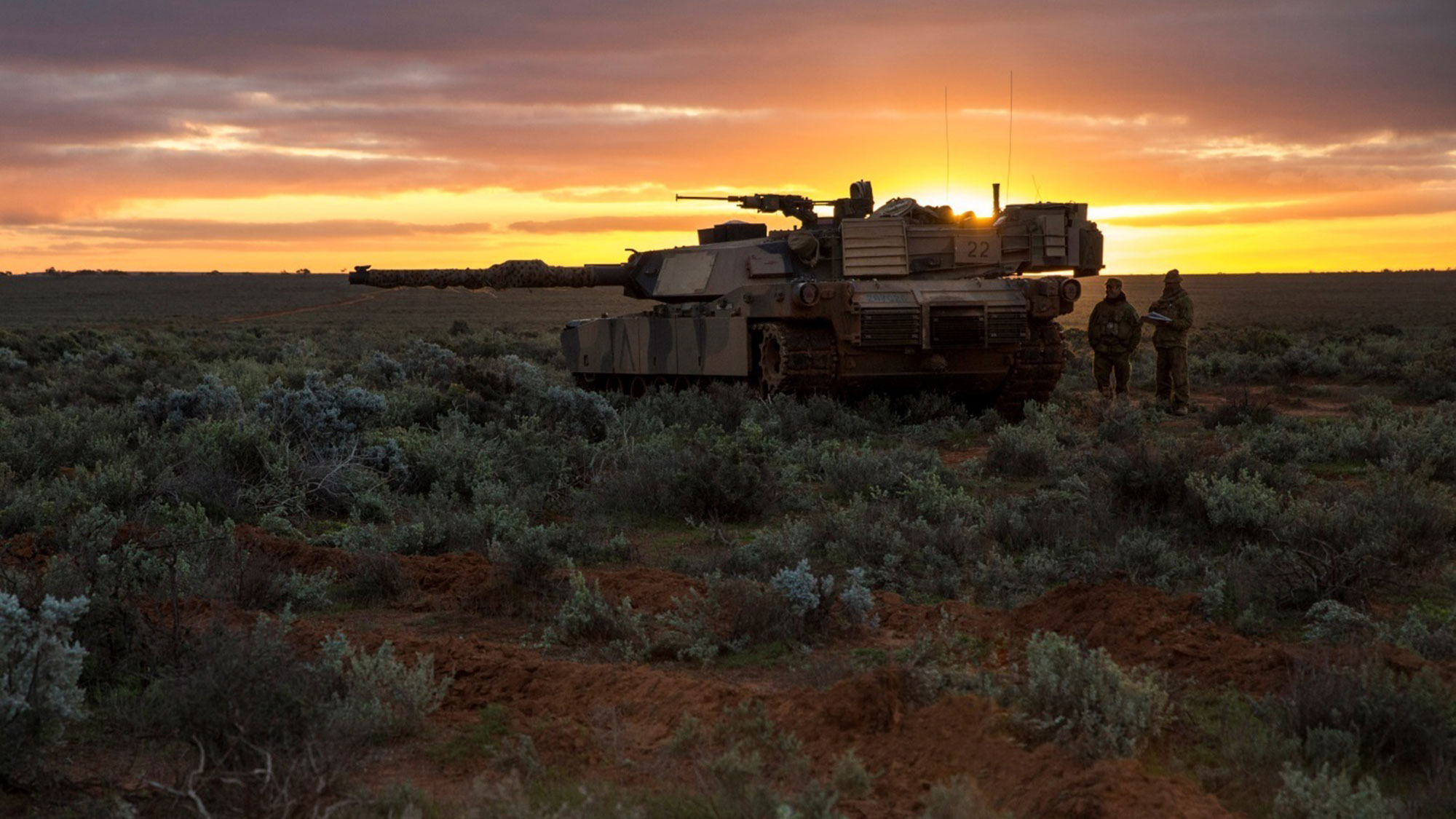

On April 4, Australia’s Department of Defence announced the award of $12.9 million to defense giant QinetiQ for a laser weapon. The move followed years of work and interest by Australia’s government in developing lasers for the battlefields of tomorrow. What is most ambitious about the Australian research into laser weapons is not the modest funding to QinetiQ, but a powerful goal set by the Department of Defence in 2020: Australia wants a laser weapon powerful enough to stop a tank.
Laser weapons, more broadly referred to as directed energy, are a science fiction concept with a profoundly mundane reality. Instead of the flashy beams or targeted phasers of Star Wars or Star Trek, lasers work most similarly to a magnifying lens held to fry a dry leaf, concentrating photons into an invisible beam that destroys with heat and time. Unlike the child’s tool for starting fires, modern directed energy weapons derive their power from electricity, either generated on site or stored in batteries.
Most of the work of laser weapons, in development and testing, has so far focused on relatively small and fragile targets, like drones, missiles, or mortar rounds. Lasers are energy intensive. When PopSci had a chance to try using a 10-kilowatt laser against commercial drones, it still took seconds to destroy each target, a process aided by all the sensors and accouterments of a targeting pod. Because lasers are concentrated heat energy over time, cameras to track targets, and gimbals to hold and stabilize the beam against the target, all ensure that as much of the beam as possible stays focused. Once part of a drone was burned through, the whole system would crash to the ground, gravity completing the task.
Tanks, by design and definition, are the opposite of lightly armored and fragile flying machines. That makes Australia’s plan to destroy tanks by laser all the more daring.
Tanks for the idea
In the summer of 2020, Australia’s Department of Defence released a strategy called the 2020 Force Structure Plan. This document, like similar versions in other militaries, offers a holistic vision of what kinds of conflicts the country is prepared to fight in the future. Because the strategy is also focused on procurement, it offers useful insight into the weapons and vehicles the military will want to buy to meet those challenges.
The tank-killing laser comes in the section on Land Combat Support. “A future program to develop a directed energy weapon system able to be integrated onto [Australian Defence Forces] protected and armoured vehicles, and capable of defeating armoured vehicles up to and including main battle tanks. The eventual deployment of directed energy weapons may also improve land force resilience by reducing the force’s dependence on ammunition stocks and supply lines,” reads the strategy.
The latter part of the statement is a fairly universal claim across energy weapons development. While laser weapons are power-intensive, they do not need individual missiles, bullets, or shells, the same as what a chemical explosive or kinetic weapon might. Using stored and generated energy, instead of specifically manufactured ammunition pieces, could enable long-term operation on even field-renewable sources, if available. This could also get the shot per weapon use down below the cost of a bullet, though it will take many shots for that to equal the whole cost of developing a laser system.
But getting a laser to punch through the armor of a tank is a distinct and challenging task. A drone susceptible to melting by laser might have a plastic casing a couple millimeters thick. Tank armor, even for older versions of modern tanks, can be at least 600 mm thick steel or composite, and is often thicker. This armor can be enhanced by a range of add-ons, including reactive plating that detonates outward in response to impact by explosive projectiles.
Defeating tank armor with lasers means finding a way to not just hold a beam of light against the tank, but to ensure that the beam is powerful and long-lasting enough to get the job done.
“One problem faced by laser weapons is the huge amount of power required to destroy useful targets such as missiles. To destroy something of this size requires lasers with hundreds of kilowatts or even megawatts of power. And these devices are only around 20% efficient, so we would require five times as much power to run the device itself,” wrote Sean O’Byrne, an engineering professor at UNSW Canberra and UNSW Sydney, in a piece explaining the promise and peril of anti-tank lasers.
O’Byrne continued: “We are well into megawatt territory here — that’s the kind of power consumed by a small town. For this reason, even portable directed energy devices are very large. (It’s only recently that the US has been able to make a relatively small 50kW laser compact enough to fit on an armoured vehicle, although devices operating at powers up to 300kW have been developed.)”
April’s announcement of a modest sum to develop a domestic laser weapon capability in Australia is a starting point for eventually getting to the scale of lasers powerful enough to melt tanks. Should the feat be accomplished, Australia will find itself with an energy-hunger tool, but one that can defeat hostile armor for as long as it is charged to do so.
